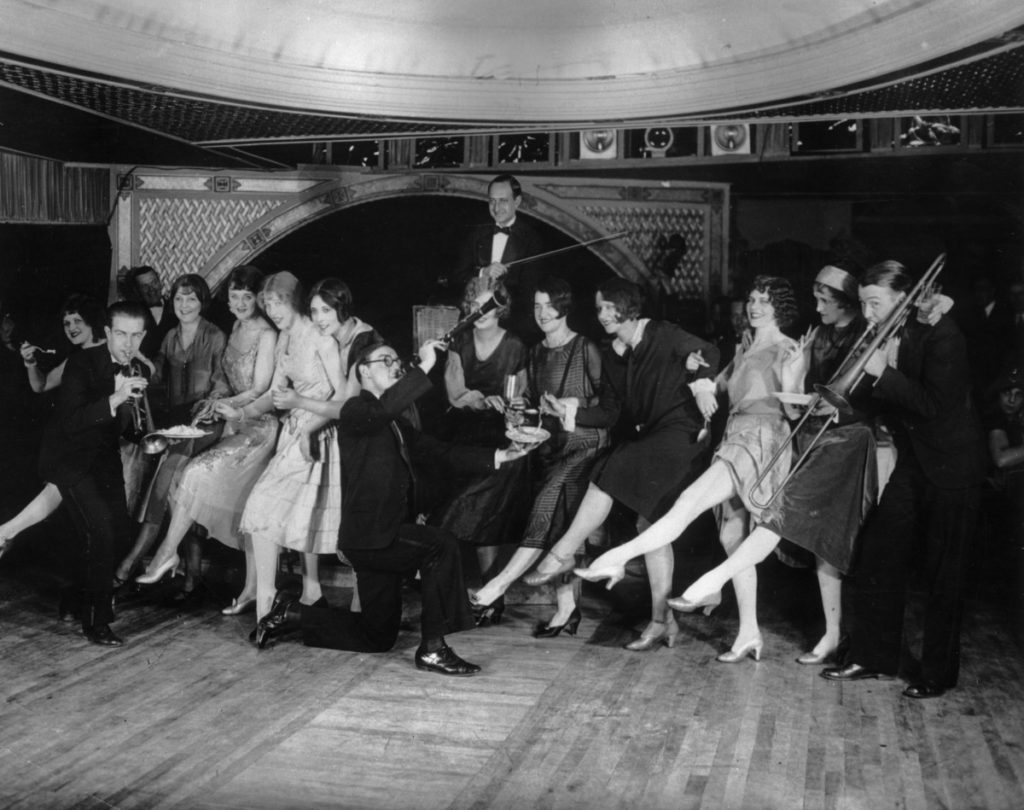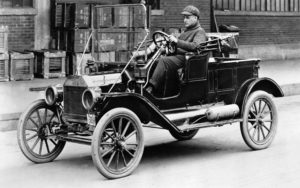
Should we be preparing for a Roaring Twenties style business boom?
Think of the ‘Roaring Twenties’ and what comes to mind?
Flapper girls, swing dancing and Jazz. It was all of those things - and more. These icons of the 1920s reflect some significant cultural shifts that were taking place in the western world. It was a time when countries were opening back up and enjoying the prosperity of an economic boom that followed a global pandemic.
This sense of celebration and self-confidence helped to deliver a boost to capitalist economies around the world. It gave rise to a thriving consumer culture and a growing entertainment world of cinema and radio.
The United States became the richest country in the world per capita. Between 1921 and 1929, the US economy grew by 42%. European economies also flourished with post-war bonds helping to rebuild nations left scarred by the Great War.
Which begs the question: Could history be about to repeat itself?
Could the 2020s be about to follow a similar path to the 1920s as we experience a post-pandemic economic boom? It’s an intriguing theory, one that’s based on some of the current analysis and forecasting by financial experts.
So what’s behind this and what are the implications for our businesses?
Parallels between the 1920s and the 2020s
Global Pandemic
The 1920s followed in the wake of a Spanish flu that infected one-third of the world’s population and led to; an estimated 50 million deaths worldwide (more than twice the number lost during World War I).
Much like our last year, from 1918 to 1919, nations had to adapt to a new world of face masks, quarantines, lockdowns and limitations on public gatherings. Businesses were closed, sporting events cancelled and the streets of major cities left deserted as the pandemic spread.
But as more people developed immunity and the virus lost its potency, normal life had returned to normal by 1920. Having been confined for so long, people began to celebrate their freedom with consumer spending kick-starting the ‘roaring’ economy of the 1920s.
Yale sociologist Nikolas Christakis predicts a similar post-pandemic uplift in 2021. He believes that improved personal well-being will lead to increased levels of social interaction, creativity, experimentation, and innovation that will drive an economic uplift.
In a recent interview with Nesta, he said:
“I think we’re going to have a period a bit like the Roaring Twenties after the 1918 pandemic. I think people are going to relentlessly seek out social experiences, you know, nightclubs and restaurants and political rallies and sporting events and so on, I think there’s going to be a lot of spending, people’s pocketbooks are going to open up.”
The positive outlook is backed up by some serious financial heavyweights such as the IMF (International Monetary Fund) who are forecasting that the global economy is set to grow by 6% over the next 12 months.
IMF chief economist Gita Gopinath stated:
“Hundreds of millions of people are being vaccinated, and this is expected to power recoveries in many countries later this year. Additional fiscal support in large economies — particularly the United States — has further improved the outlook."
In addition, Americans are now estimated to have access to around $2 trillion in excess savings as a result of the temporary limits on consumer spending caused by the pandemic.
Technological change
A large part of the optimism and freedom felt by people during the 1920s came from new technology. This was the era when the car started to redefine the way people lived their lives.
It was a revolution driven by the success of the Model T Ford with 15 million being sold each year by 1927. It changed where people lived and worked and gave rise to a whole raft of new businesses - motels, roadside cafes and drive-thrus.
The improvements made during WW1 to air and rail technology also helped to make transport more accessible and convenient than ever before. It’s during this decade that we start to see the birth of commuter towns.
The same disruptive role of technology can be seen in today’s economy with digital and automated ways of working. The COVID pandemic has rapidly accelerated the shift to remote and flexible working.
It was a change adopted by 88% of all businesses during 2020 with just under half (47%) of these new work-from-home roles expected to become permanent. In doing so, it has acted as a catalyst for a remarkably rapid digital change.
A global survey by McKinsey & Co found that it had fast-forwarded companies’ digital transformation plans by an average of seven years. Economists like Robert J Gordon predict a significant surge in productivity as a result of this move to more efficient and flexible business structures.
So what could a Roaring Twenties 2.0 look like?
The experience of Australia provides a quick peek at what’s possible. Having dealt with the worst of their pandemic early, the Australian economy has quickly bounced back from recession with an 8% jump in spending on goods and services since restrictions were lifted. What remains to be seen is whether this is a temporary surge or the start of a more robust and long-term economic growth. But generally the areas we can expect to see growth are all of those things that we’ve not been able to do for the past year - to socialise, to attend events and to shop.
What can a business do to prepare for the ‘roar’?
If history repeats and the predictions prove to be accurate, we may be headed towards a sustained economic boom. To prepare, businesses needs to be ready. That means creating agile structures that are scalable and can manage the demands of rapid growth.
Audit your work processes
For many businesses, the move to a digital workflow was something they were forced to implement at short notice. New systems were rapidly introduced to handle the short-term restrictions of COVID lockdowns.
With the prospect of an economic boom ahead, it’s important to review the changes made and to ensure that you are prepared for a post-COVID business world. While offices may reopen, processes need to be compatible with a hybrid workforce, making smart use of cloud management and automation.
Prepare for return of business travel
One of the great unknowns is what will happen to business travel once restrictions are fully lifted. Research by consulting firm Oliver Wyman suggests that three-quarters of business travellers expect a return or increase on pre-pandemic activities.
This matches the analysis of Nikolas Christakis with predictions of a post-COVID clamour for a return to real-world interactions and face-to-face meetings after more than a year of teleconferencing.
Domestic travel will be the first to bounce back with an increase in road and rail journeys. Some countries, such as France, are promoting rail travel as a short-term alternative to air travel for internal journeys.
International travel remains unknown. While restrictions will gradually be relaxed, business travel managers will need to devote considerably more time and resources to make sure that plans comply with local rules and regulations.
Future-proof your administration
So are we really about to enter a new ‘Roaring Twenties’? That remains to be seen but there’s certainly plenty of evidence to suggest that we’re heading towards a period of economic good health.
As restrictions ease and consumer confidence increases, there are going to be some fantastic opportunities for businesses to grow. Making the most of these will require admin structures that can handle the rigours of a post-pandemic environment.
It means moving to agile, scalable and remote-friendly ways of working that react quickly to changes and to reap opportunities as they are presented. It means harnessing the benefits of automation and finding better ways to handle hybrid workforces.



